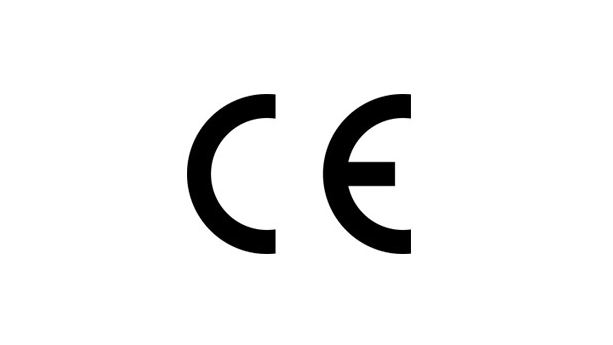
Children’s jewellery sold in the European Union must meet certain safety requirements, in addition to substance, labelling, and testing requirements. In this guide, we explain what EU importers and manufacturers must know about REACH, General Product Safety Regulation, Toy Safety Directive, and other compliance requirements relevant for children’s jewellery in the European Union.
Content Overview

FREE CONSULTATION CALL (US, EU & UK)
- Request a free 30-minute call with Ivan Malloci to learn how we can help you with:
- Find product requirements
- Certification and labeling
- Lab testing
REACH
The REACH Regulation restricts the usage of potentially harmful substances in consumer products, which includes children’s jewellery. Such products (e.g. bracelets, necklaces, and rings) may contain substances such as lead, nickel, and cadmium, which are restricted by REACH.
Note that for some substances, REACH sets more stringent restrictions for jewellery because these products are meant to come into contact with human skin for a prolonged time.
Standards
The following two standards provide methods of testing the nickel release from post assemblies and coated items. Both standards are referenced in entry 27 (nickel) of Annex XVII.
| Test methods | Description |
| EN 1811 – Reference test method for release of nickel from all post assemblies which are inserted into pierced parts of the human body and articles intended to come into direct and prolonged contact with the skin | This test method simulates nickel release from:
|
| EN 12472 – Method for the simulation of accelerated wear and corrosion for the detection of nickel release from coated items | This standard’s test method simulates corrosion and accelerated wear of coated products meant for direct and long-term skin contact.
This method does not apply to products that:
|
Annex XVII
Children’s jewellery may contain several substances listed in Annex XVII. Here we provide three examples:
a. Cadmium – may be present in metal jewellery components and imitation jewellery, including piercing jewellery and brooches. It is restricted to 0.01% by weight.
b. Nickel – may be found in components intended for insertion into pierced ears and other body parts. In this case, it is restricted to a migration limit of a maximum of 0.2 μg/cm2/week. Nickel may also exist in products meant to directly come into long-term contact with human skin such as earrings and anklets. However, in this case, it is restricted to 0.5 μg/cm2/week.
c. Lead – may be found in products such as bracelets, necklaces, and rings. Lead is restricted to 0.05% by weight in these products.
SVHC Candidate List
If your children’s jewellery contains one or more substances listed on the SVHC Candidate List that exceed a concentration of 0.1% by weight, you should inform ECHA by submitting a SCIP notification.
Here are some examples of listed substances found on the SVHC List that may be found in children’s jewellery (e.g. in coating materials):
- Bumetrizole
- 2,4,6-tri-tert-butylphenol
- Phenol, methylstyrenated
General Product Safety Regulation
The General Product Safety Regulation (GPSR) establishes safety requirements for consumer products, which includes children’s jewellery.
The regulation generally requires you to:
- Have your product tested
- Provide technical documentation (e.g. test reports)
- Label your products and packaging with traceability information
- Provide user instructions and applicable warnings
Standards
This regulation sets harmonised standards for many types of products. When they exist, importers and manufacturers should use those standards to prove a product’s compliance with the requirements of the regulation.
However, we could not find any harmonised standards that specifically apply to children’s jewellery. When harmonised standards do not exist for a specific product, you can use different EN or international standards to assess product safety.
You can, for instance, use EN 71-1 to find out if the product contains small parts, and thus. Or, as another example, you can use EN 71-3 to determine the migration of certain dangerous substances from parts or materials of a product.
The CEN and CENELEC website also lists standards that apply, for instance, to jewellery ring sizes and the determination of gold in gold jewellery alloys. However, here we do not list those standards because we do not have any evidence that they cover safety requirements.
Documentation
Here we summarise the key documentation requirements under the regulation.
| Title | Description |
| Technical documentation | The technical documentation should contain information that helps determine the product safety, such as:
a. A description of the product b. Elements to assess product safety c. Analyses of product-relevant risks, and solutions to mitigate those risks d. Test reports e. Relevant standards |
| Instructions | Importers and manufacturers should make sure that they provide user instructions regarding the product’s safe use and disposal. |
| Test reports | Manufacturers should provide, as part of the technical documentation, reports of tests performed on the product. |
Labelling requirements
Here, we list several items that you should include on the product’s label.
| Title | Description |
| Traceability information | The product, its packaging or the accompanying document, should contain the following traceability information:
|
| Safety information, instructions, and age-suitability | Importers and manufacturers should ensure their product’s label contains:
|
| Warnings | The product’s label, packaging, or accompanying document, should contain warnings for the product’s safe use and disposal. |
Toy Safety Directive
The Toy Safety Directive sets chemical, mechanical, and other safety requirements for toys and products that have “play value” and are meant for children up to 14 years of age. Such products could include jewellery that is considered that can be used for play.
The directive requires importers and manufacturers to:
a. Make sure the toys, or substances within, do not harm the child’s health when used as intended
b. Ensure they properly affix the relevant warning labels that highlight the product’s risks and explain how to avoid such risks
c. Ensure that the product contains traceability information (e.g. product identification)
d. Provide documentation, such as test reports, user instructions, safety information, technical documentation, and the Declaration of Conformity
Harmonised standards
Some standards harmonised under this directive are especially relevant for jewellery. We list them below. Other standards relevant to jewellery may also exist.
As already explained, even if your product has no play value and thus is not covered by the Toy Safety Directive, you can still use the standards to assess the safety of your product.
| Standard | Description |
| EN 71-1 – Safety of toys – Part 1: Mechanical and physical properties | This standard contains requirements and methods of testing the mechanical and physical properties of toys.
The standard also contains requirements regarding a product’s labelling, marking, and packaging. |
| EN 71-3 – Safety of toys – Part 3: Migration of certain elements | This standard contains requirements and methods for testing toy materials and toy parts for the migration of substances, such as the following:
|
Documentation
In the table below, we list some of the key documents necessary to comply with the requirements of this directive.
| Title | Description |
| Declaration of Conformity | The Declaration of Conformity is a self-issued document that declares the product’s compliance with the directive’s requirements.
It should contain the information specified in Annex III of the Toy Safety Directive. |
| Technical Documentation | The technical documentation should specify how the manufacturer complied with the directive’s requirements.
It should contain the items listed in Annex IV. |
| User instructions and safety information | Importers and manufacturers should ensure that they include instructions and safety information with their products.
The usage instructions should also indicate the toy’s inherent risks and hazards, and provide ways to avoid such risks. The manufacturer should include relevant warnings in the provided instructions, or on the toy or packaging. |
| Test Report | Test reports indicate whether the manufacturer’s product complies with the directive’s requirements. The directive requires manufacturers to include test reports as part of their technical documentation. |
Labelling requirements
In this section, we list labelling requirements regarding the CE marking, traceability information, and warnings.
| Title | Description |
| CE Marking | 
The CE marking is a mark that indicates a toy product’s conformity with the Toy Safety Directive. The CE marking should be permanently, clearly, and legibly affixed to the toy, or:
Additionally, the CE marking may be followed by a pictogram or a marking that indicates a special risk or use. |
| Product Traceability | Importers and manufacturers should include the following traceability information on their products:
When the product’s nature or size does not permit this, manufacturers should place this information on either the packaging or an accompanying document. |
| Warning Labels | According to Article 11 and Annex V, warnings on the toy product should:
|
Lab testing
You should have your products tested to ensure they comply with the relevant requirements and are safe for children to use. Some regulations and directives, such as the Toy Safety Directive, require you to get your products tested. For others, it is a practical necessity, because you should still make sure that your product, for instance, does not contain substances above permitted levels.
If your product passes lab tests, you receive a test report indicating product compliance. Some regulations or directives require you to provide this report as part of your technical documentation.
| Regulation | Lab testing |
| REACH | Your products should undergo REACH testing to ensure they either do not contain restricted substances above permitted levels or do not migrate easily from the product to the skin.
For instance, you should test your children’s bracelets to ensure they do not contain more than 0.01% of cadmium by weight. |
| General Product Safety Regulation | Your products should undergo mechanical, chemical and other relevant testing to ensure product safety. If there are no harmonised standards for your product, you can still test against the requirements of other relevant standards. |
| Toy Safety Directive | You should have your products tested against the requirements of standards such as EN 71-1 and EN 71-3.
EN 71-1 specifies methods of testing a product’s mechanical and physical properties, so you can use this to determine if your jewellery contains a small part, for instance. EN 71-3 specifies methods of testing the migration of some substances, such as aluminium and lead. |
Children’s jewellery testing companies
Here we list several companies that claim to be able to test jewellery against the regulations or directives mentioned above
- Intertek
- Eurofins
- TÜV Rheinland
- QIMA
- SGS
















